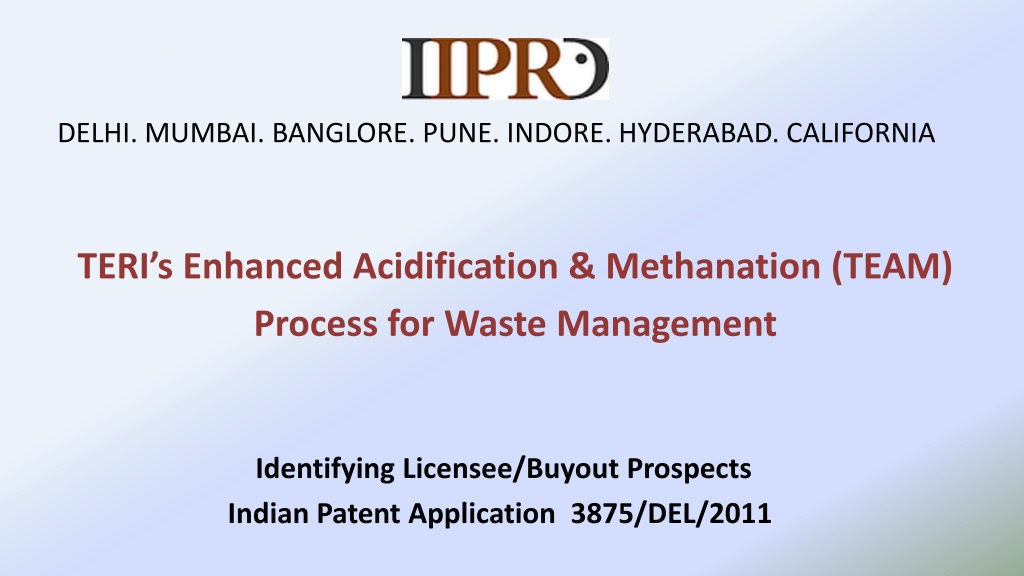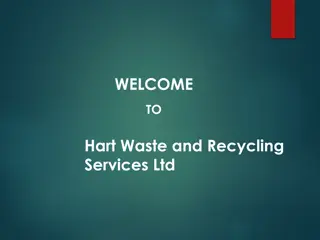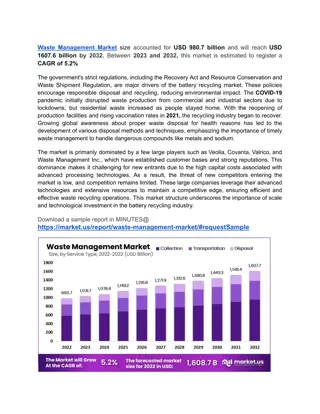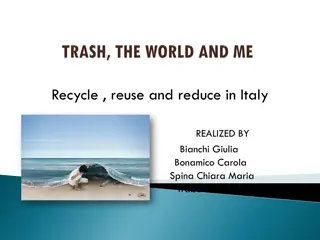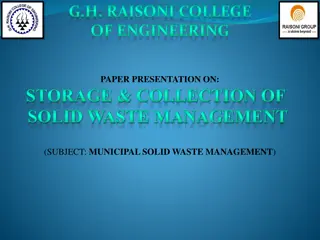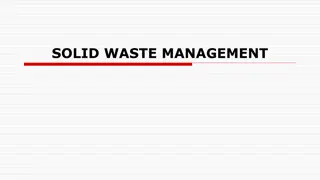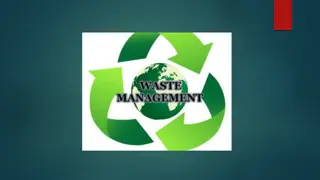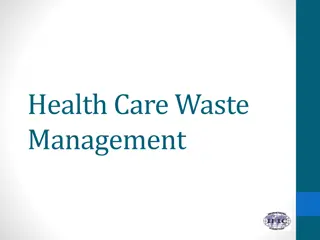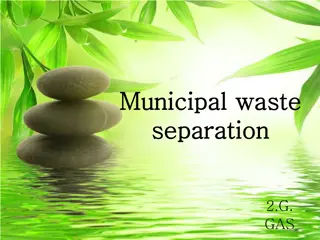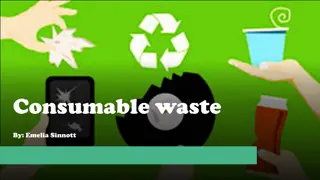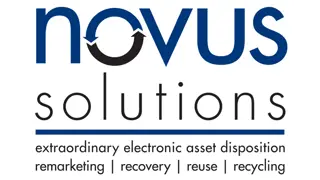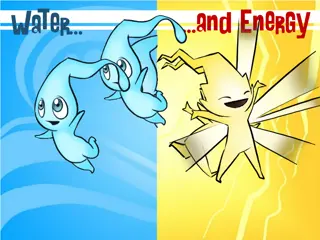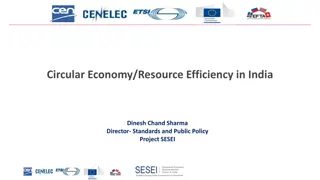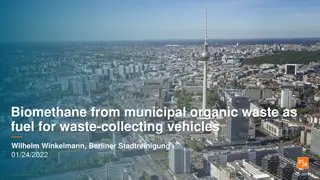Innovative Waste Management Process for Sustainable Future
Introducing the TEAM process - Enhanced Acidification & Methanation, a revolutionary waste management solution for India. By extracting organics from solid waste, converting them into valuable resources, and generating power, this technology addresses the growing waste generation trends in the country. It overcomes the limitations of existing methods, offering a more efficient and eco-friendly approach to waste disposal and energy generation.
Download Presentation

Please find below an Image/Link to download the presentation.
The content on the website is provided AS IS for your information and personal use only. It may not be sold, licensed, or shared on other websites without obtaining consent from the author. Download presentation by click this link. If you encounter any issues during the download, it is possible that the publisher has removed the file from their server.
E N D
Presentation Transcript
DELHI. MUMBAI. BANGLORE. PUNE. INDORE. HYDERABAD. CALIFORNIA TERI s Enhanced Acidification & Methanation (TEAM) Process for Waste Management Identifying Licensee/Buyout Prospects Indian Patent Application 3875/DEL/2011
Background Current practice for waste disposal Thrown into sewer Dumped in low-lying areas Organic waste A resource Great potential to replace LPG (liquefied petroleum gas) or coal Potential to replace chemical fertilizers with good quality organic manure 2
Waste Generation Trends In India Year Per Capita Waste Generation (g/day) Total Urban Municipal Waste Generation (MT/y) 1971 375 14.9 1981 430 25.1 1991 460 43.5 1997 490 48.5 2025 700 ~Double the amount of 1997 P e r c a p i t a w a s t e g e n e r a t i o n 2 0 3 0 2 0 1 0 1 9 9 0 1 9 7 0 3 7 5 7 0 0 4 3 0 4 6 0 4 9 0 Q u a n t i t y o f w a s t e ( g m )
Projected Power Generation Potential Quantity of solid waste generated (TPA) 5000 300000 Power generation potential (MW) 4500 Pow er potential(MW) 250000 4000 Quantity of solid w aste (MTD) 3500 200000 3000 2500 150000 2000 100000 1500 1000 50000 500 0 0 2002 2007 2012 2017 Year
Limitations Of Existing Technologies Scum formation in small size plants Slurrymanagement Performance of imported technologies is not Indianwaste Large space requirement Costs involved in maintenance of the plants Technical skills requirement for operation and maintenance Large water requirements No decentralizedapplication established to
Proposed Technology Bi-phasicreactor Acidification The organics from solid waste are extracted in the leachate (liquid form) by the action of hydrolytic and acidogenic microbes form of Digested slurry is rich in available nutrients which is dried and used as manure Methanation The extracted organics (leachate) are treated in a upflow anaerobic sludge blanket reactor (composed of methane and carbon dioxide) by the action of acetogens and methanogens high rate to form biogas
Waste Management Technology DIGESTED SLUDGE GENERATEDFROM ACIDIFICATION REACTORS SEGREGATED ORGANIC WASTE IST DAY IIND DAY IIIRD DAY IVTH DAY VTH DAY VITH DAY ACIDIFICATION REACTOR-I ACIDIFICATION REACTOR-II ACIDIFICATION REACTOR-III ACIDIFICATION REACTOR-IV ACIDIFICATION REACTOR-V ACIDIFICATION REACTOR-VI WATER TANK EFFLUENT RECYCLING OPEN SUN DRY ACIDIFICATION PHASE UP-FLOW ANAEROBIC SLUDUASBGE BLANKET REACTOR (UASB) LEACHATE COLLECTION TANK SOLID MANURE SPRAYIN AGRICULTURAL FIELD BIOMETHANATION PHASE BIO GAS USEIN CANTEEN USEIN HORTICULTURAL PURPOSE BIO GAS HOLDER LEGENDS 1. ORGANIC WASTE 2. RECIRCULATION 3. BIOGAS 4. LEACHATE 5. WATER 6. DIGESTED SLUDGE ELECTRICITY PRODUCTION
Key Advantages High rate methane producing reactor. Low HRT of 7 days. Digested waste has high NPK values. High methane content in biogas (>75%). Elimination of Scum formation - a feature in small size plants. Production of non-flowable/ semisolid digested residue. Very low water requirement due to recycling within the process. Successfully tested for leafy waste, food waste, press mud, food- processing waste, tea waste, vegetable market waste, township waste etc.
KEYADVANTAGES Produces no slurry Elimination of Scum formation Aesthetic look with low maintenance cost. No environmental impact. Proven performance of pilot plant since Jan. 1999. High Energy and enriched manure Suitability for small and decentralized application Ease in material handling
ProposedTechnology - Acidification Startup of Acidification process Drying of digested sludge for manure production
Feedstock To The Team Digester Vegetable Market waste Kitchen waste Agricultural residues Aquatic plants
Technology Potential (m3/t) Type of waste Biogas Manure Value N 0.9 0.33 P K 0.43 0.51 32.4 Apple waste 0.04 0.06 13.7 7 Pineapple 8.9 0.61 0.60 0.37 Press mud 20 2.1 1.6 2.4 Vegetable waste 20.2 5 1.2 0.07 0.63 Mixed waste 10 1.8 0.1 3 Coffee Pulp 54 0.5 0.1 0.3 Food waste 6.1 2.3 0.02 0.34 Tapioca
Present Implementations S. No. Site Address Capacity Feed stock Status 1 2 3 4 5 6 7 8 9 10 11 12 13 14 15 16 17 18 19 NTPC, Sipat, Chhattishgarh NTPC, Kahalgaon, Bihar Navi Mumbai Municipal corporation (NMMC) ,Bela Pur, Navi Mumbai 250 Kg/day Canteen waste IBIS Hotel, Banglore, Karantaka IOCL, Refinery, Panipat, Haryana IOCL, Nephtha Cracker, Panipat, Haryana Saptashrungi Devi Temple Place: Vani, Dindori, Nashik THDC Limited, Rishikesh, Uttarakhand NTPC, Dadari Unit, UP Vedanta Aluminium Limited, Lanjigarh, Orissa NTPC, Singrauli, Distt Sonebhadra, UP NTPC, Kawas gas project, Surat, Gujarat IOCL, R&D center, Faridabad ONGC colony, Sector 39, Noida UP CIDCO, Bela Pur, Navi Mumbai Sona Koyo Steering systems ltd.Gurgaon, Haryana NTPC, Faridabad Gas Power Project, RashmiPuram, Faridabad,Haryana 50 kg/day TERI, Gual pahari campus, Gurgaon, Haryana Numaligarh Refineries limited, Golaghat, Assam 1000 kg/day Township waste 100kg/day Canteen waste Advances stage Under erection Under commissioning Under commissioning Operational operational 100 kg/day Food waste 250 kg/day Canteen waste 250 kg/day Canteen waste 500 kg/day Flower and food waste operational 500 kg/d Township waste 500 kg/d Township waste 1500 kg/day Food waste 250 kg/day Township waste 100 kg/day Food waste 50 kg/day Canteen waste 100 kg/day Township waste 250 kg/day Canteen waste 100 kg/day Canteen waste Township waste 50 kg/day Canteen waste 500 kg/day Food waste Operational Operational Operational Operational Operational Operational Operational Operational Operational Operational Operational operational 20 Gujarat State Fertlizers and Chemical ltd,Vadodara 250 kg/day Canteen waste Operational
EXPECTATIONS Applicant of the instant technology is interested in Out-Licensing or Commercialisation/Implementation of the Technology. To tie up with Corporates and Government / Municipal Bodies for professional, scientific on-site processing of organic waste, implemented by TERI 15
PATENT/IP STATUS Indian Application Number: 3875/DEL/2011 Application Status: Patent Pending Publication date: 05/07/2013 Priority Date: 30/12/2011 16
DELHI. MUMBAI. BANGLORE. PUNE. INDORE. HYDERABAD. CALIFORNIA ContactDetails Noida (NCR) Office E-13, UPSIDC Site-IV, Behind Grand Venice, Greater Noida, 201308 Contact Person: Tarun Khurana Contact No.: Ph (IN):+91 120 4296878, 4909201, 2399113 E-Mail: iiprd@iiprd.com, info@khuranaandkhurana.com Website: www.iiprd.com | www.khuranaandkhurana.com 17
